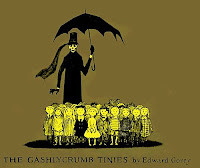 One of my favorite writers is the wonderfully sardonic and wise-cracking Dorothy Parker. I was eighteen when I first encountered her work as she was one of many female characters in a play that I was doing in high school (I portrayed Janis Joplin) and the story ends there.
One of my favorite writers is the wonderfully sardonic and wise-cracking Dorothy Parker. I was eighteen when I first encountered her work as she was one of many female characters in a play that I was doing in high school (I portrayed Janis Joplin) and the story ends there.Dorothy Rothchild was born in 1893 in New Jersey. Parker (the name is one of the few things she got from her first husband) became famous due to her many contributions to renowned magazines as Vanity Fair, Vogue , The New Yorker and Esquire. She played an important part in the development of the 1920ies literary scene in New York as one of the founders of the the Algonquin Round Table. Despite her rambunctious life and suicidal tendencies she died a natural death at the age of 73.
, The New Yorker and Esquire. She played an important part in the development of the 1920ies literary scene in New York as one of the founders of the the Algonquin Round Table. Despite her rambunctious life and suicidal tendencies she died a natural death at the age of 73.
She has only written disenchanted short stories, some poems, reviews and a few screenplays overflowing with underlyin g pessimism but I was truly captivated by her malicious wit and self-deprecation. Her stories and her poems always deal with genuine feelings or facts in a funny yet heart wrenchingly sad way. Parker doesn’t believe in sugarcoating and can often be very blunt but it is her honesty that sucks you in to a world of truth, twists and tragedy. She even made me like poetry, well hers anyway seeing as I still loath poetry in general. Her style is simple yet classic and no one has even come close to knocking the cynically sad dominatrix with a sharp eye for 20th century urban flaws of her pedestal.
g pessimism but I was truly captivated by her malicious wit and self-deprecation. Her stories and her poems always deal with genuine feelings or facts in a funny yet heart wrenchingly sad way. Parker doesn’t believe in sugarcoating and can often be very blunt but it is her honesty that sucks you in to a world of truth, twists and tragedy. She even made me like poetry, well hers anyway seeing as I still loath poetry in general. Her style is simple yet classic and no one has even come close to knocking the cynically sad dominatrix with a sharp eye for 20th century urban flaws of her pedestal.
Here are a few distinctive examples:
Résumé
Razors pain you; Rivers are damp;
Acids stain you; And drugs cause cramp.
Guns aren't lawful; Nooses give;
Gas smells awful; You might as well live.
Coda
There's little in taking or giving,
There's little in water or wine;
This living, this living, this living
Was never a project of mine.
Oh, hard is the struggle, and sparse is
The gain of the one at the top,
For art is a form of catharsis,
And love is a permanent flop,
And work is the province of cattle,
And rest's for a clam in a shell,
So I'm thinking of throwing the battle ---
Would you kindly direct me to hell?
Observation
If I don't drive around the park,
I'm pretty sure to make my mark.
If I'm in bed each night by ten,
I may get back my looks again,
If I abstain from fun and such,
I'll probably amount to much,
But I shall stay the way I am,
Because I do not give a damn.
Consider this a brief introduction seeing as the deliciously decadent Dorothy will probably be the foundation of my master thesis next year, you’ll be hearing a lot more about her soon.



























